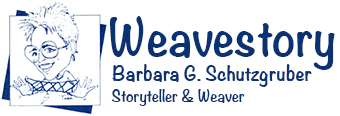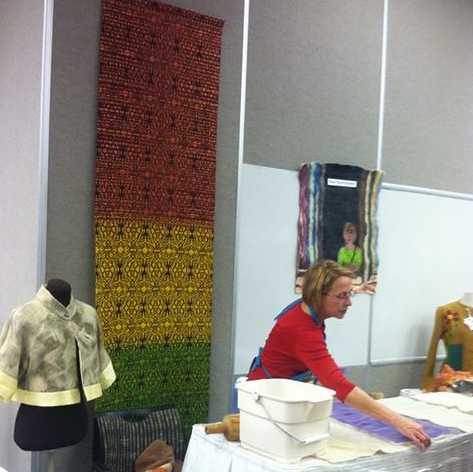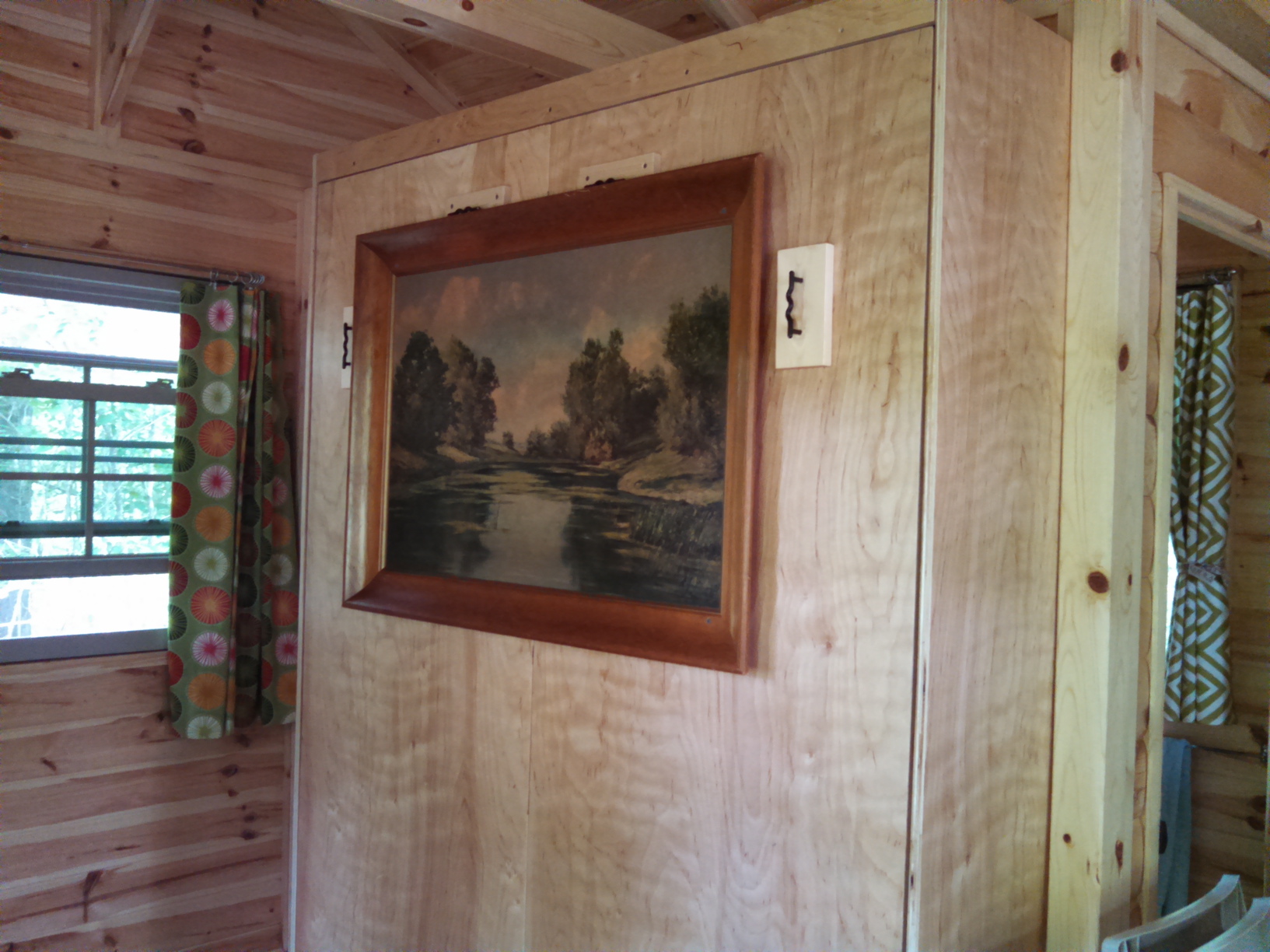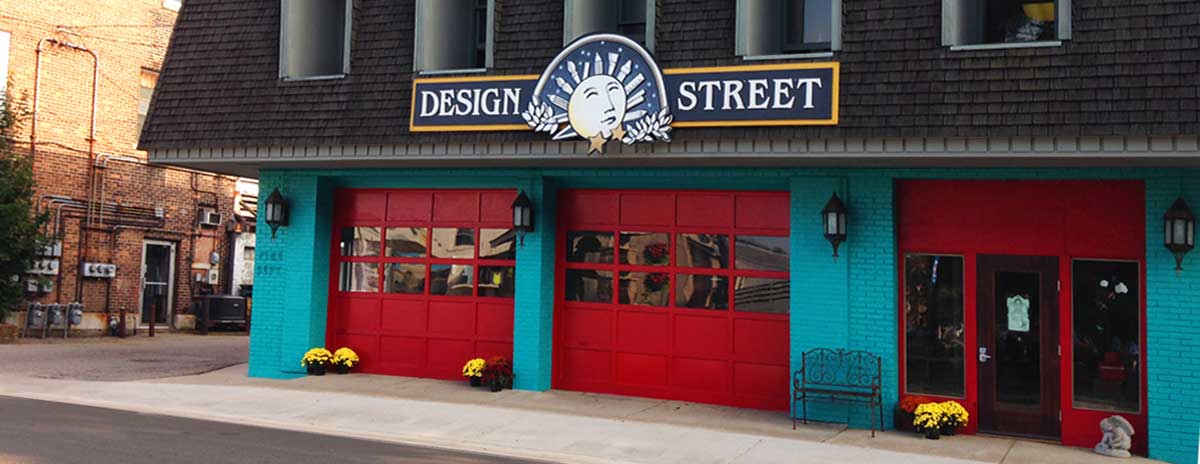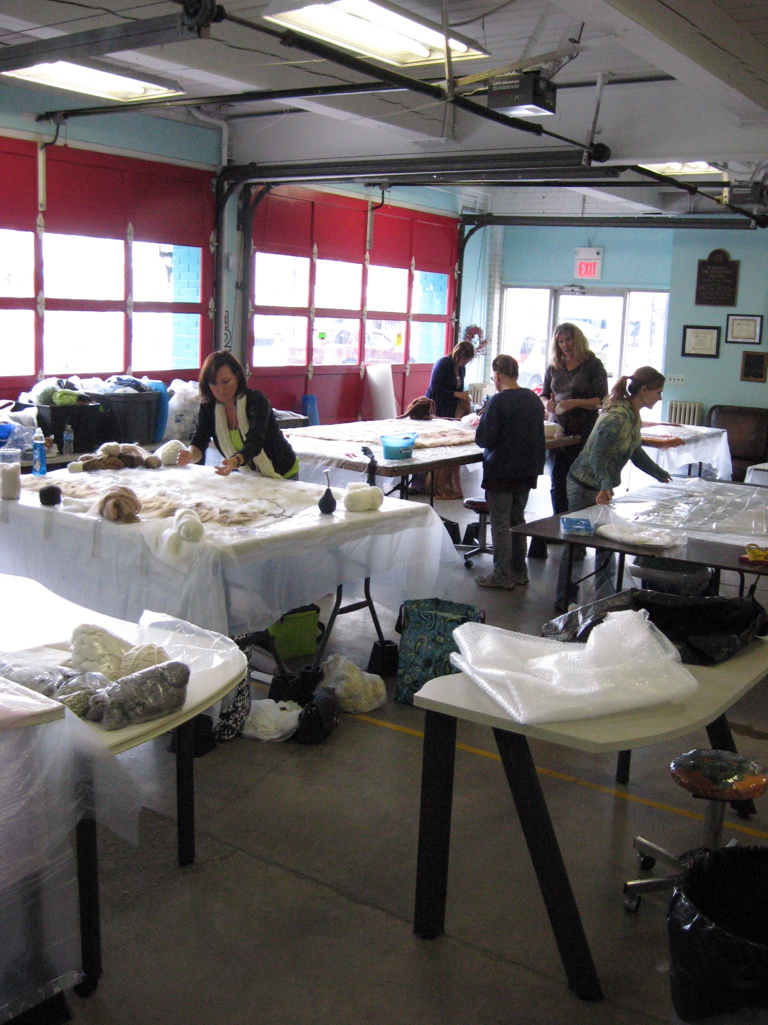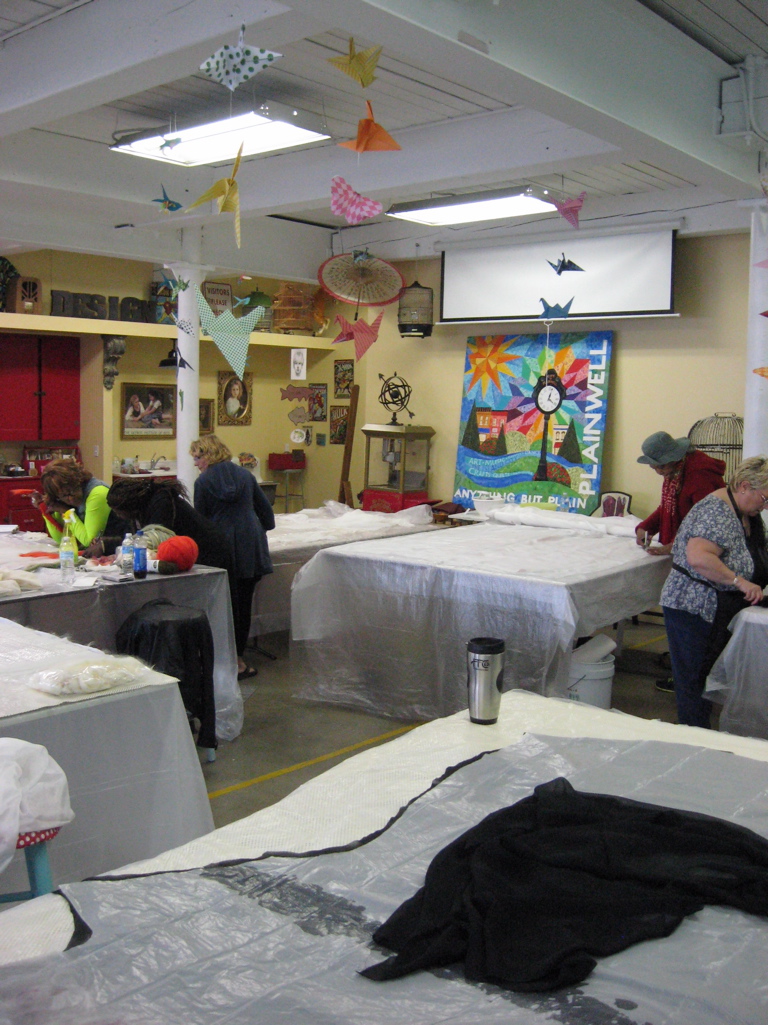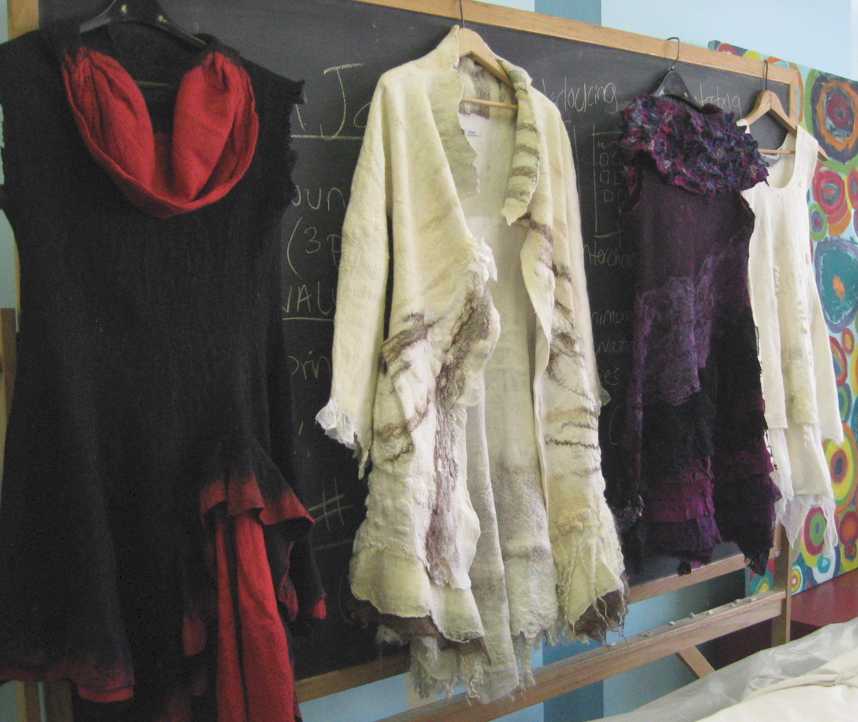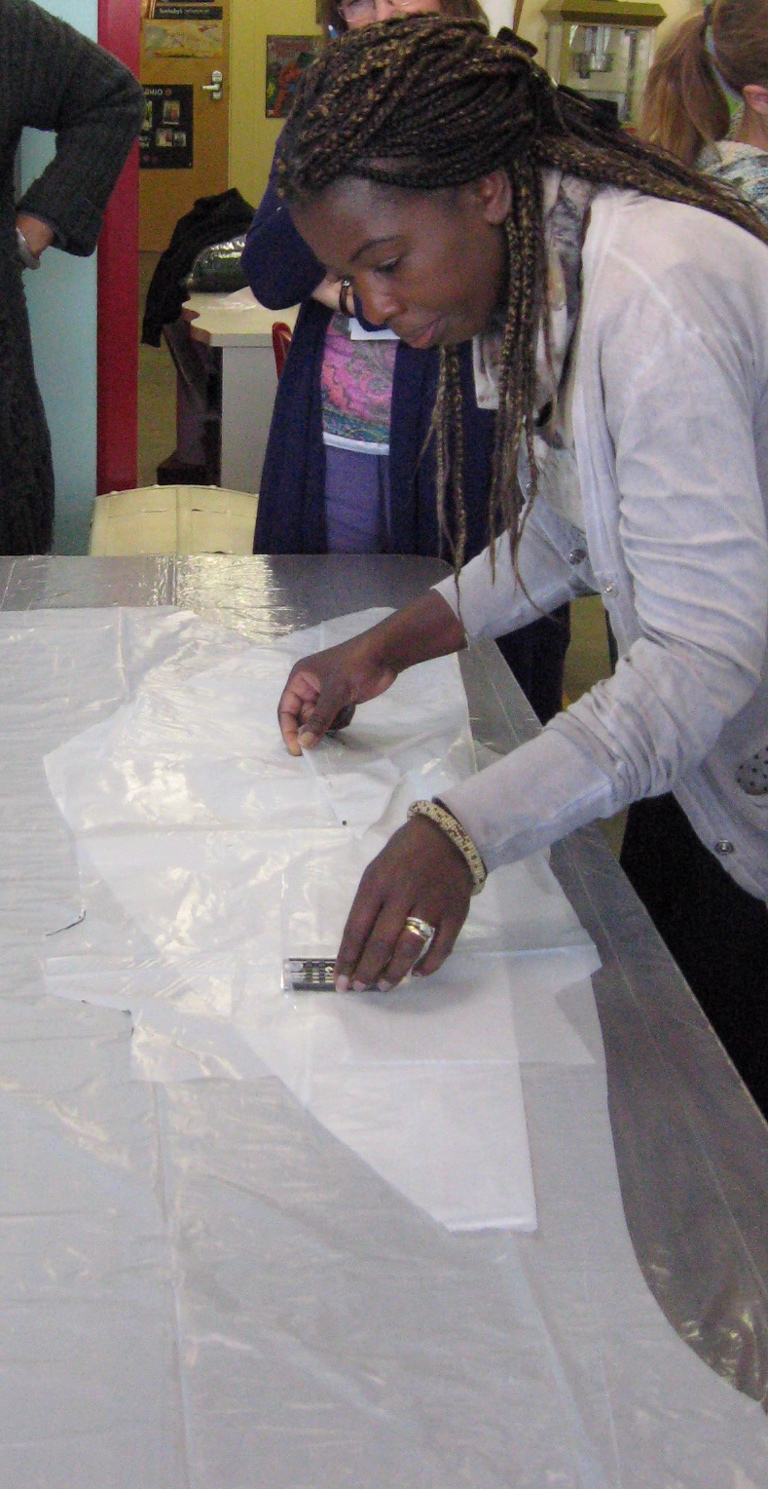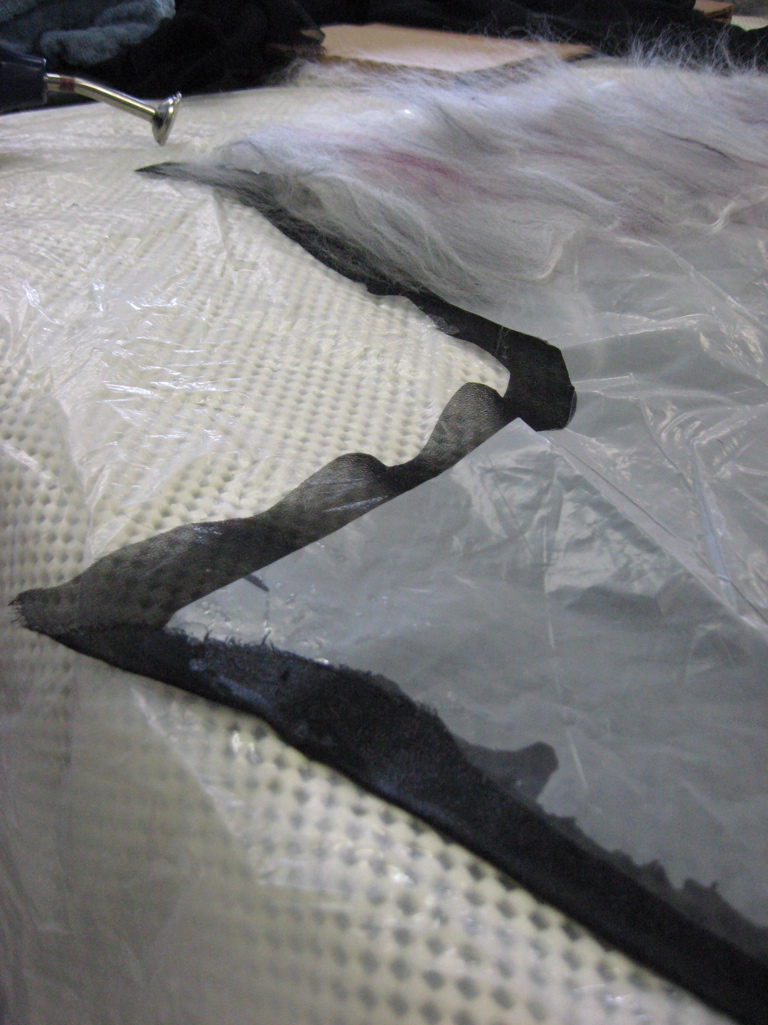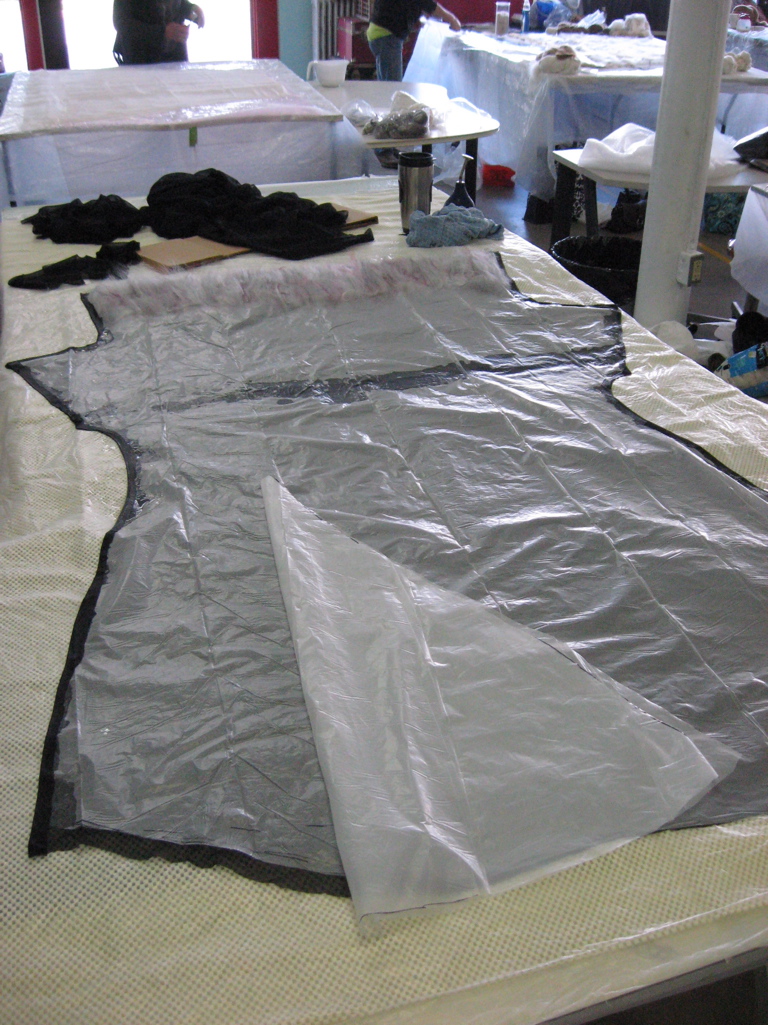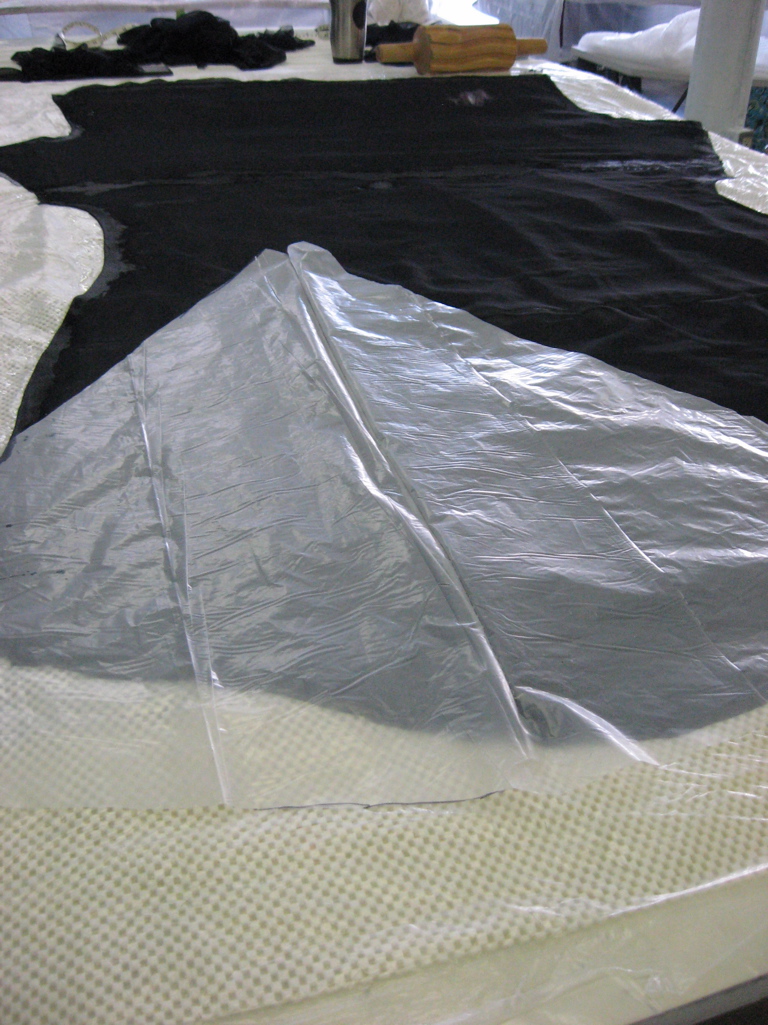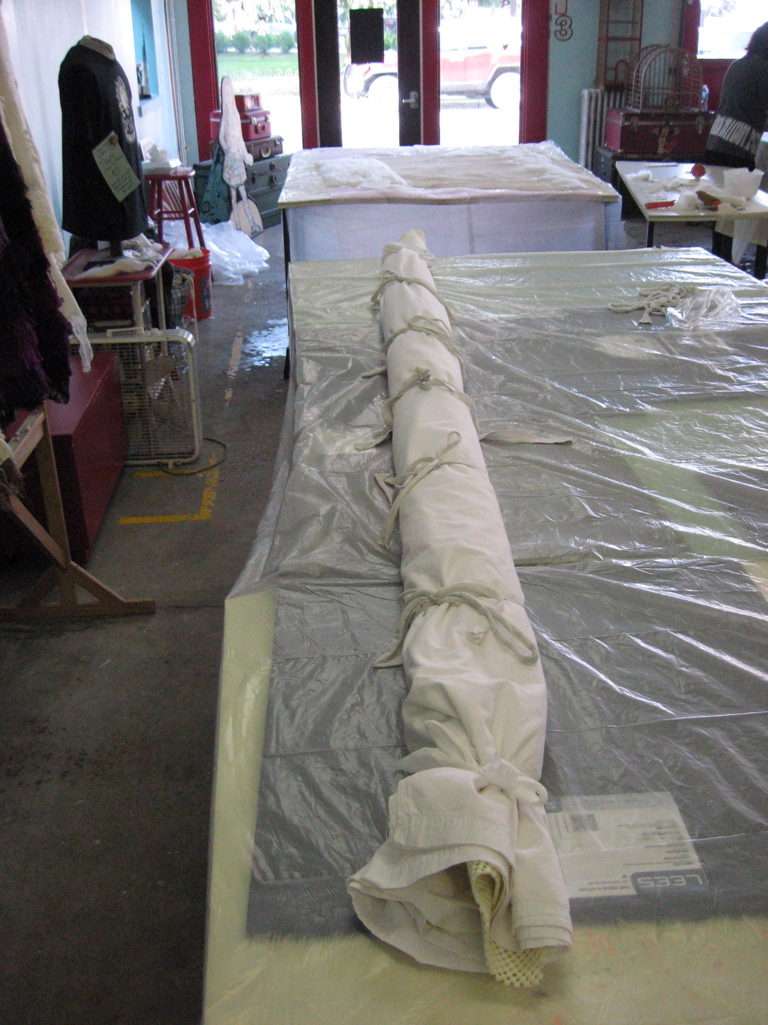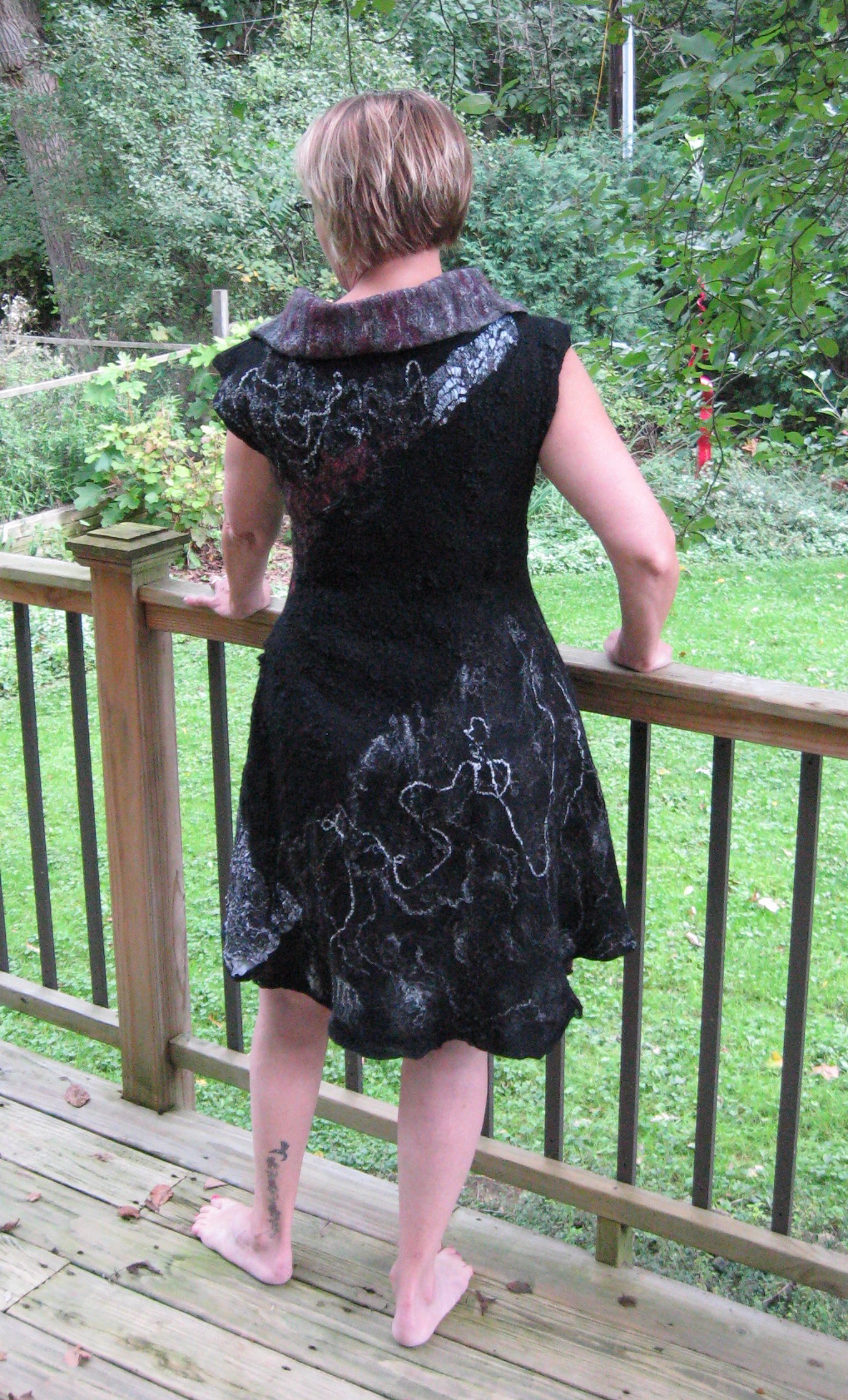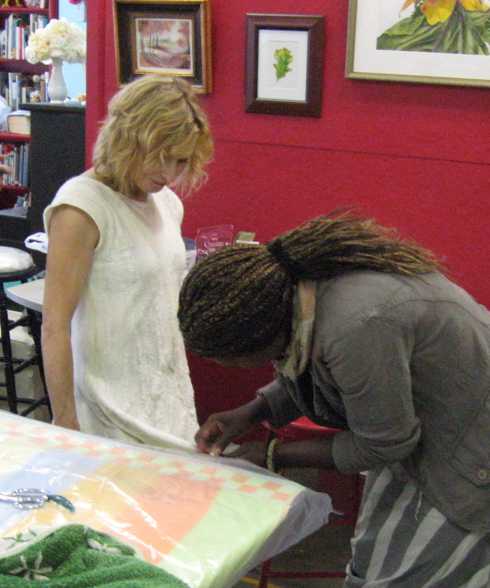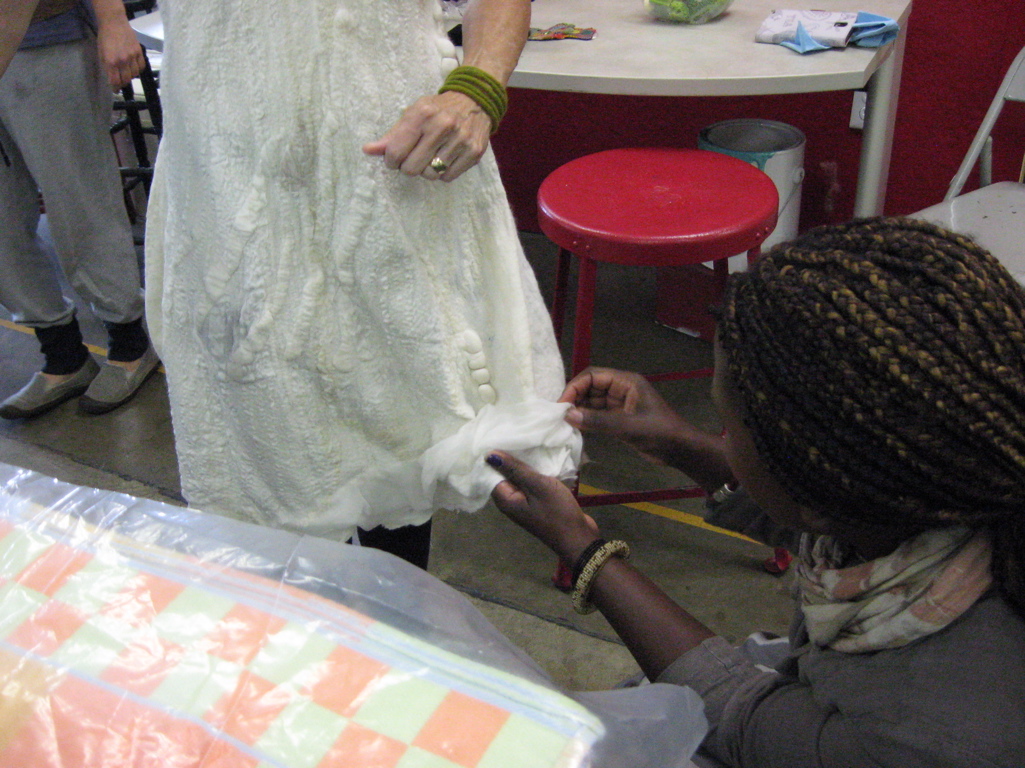Doin’ Demos
I would not be doing what I do today if it were not for demos.
Yes…. I was the kid mom and dad would lose at places like Greenfield Village – part of the Henry Ford museum complex in Dearborn, Michigan, Historic Mystic Seaport in Connecticut, or any of the Mackinac State Historic Parks at the northern tip of Michigan’s lower peninsula. The 5 of us kids would all be there one minute and the next thing they knew… there were only 4. Luckily, it did not take them long to figure out where to find me = simply backtrack to the last place that had demonstrations and there I would be… still watching….. completely spellbound. At all of these places.. and many more…. I saw weavers, spinners, dyers, blacksmiths, woodworkers, glass blowers, ropemakers, coopers…. all plying their trade for everyone to see. Everyday people actually DOING these crafts with skill and artistry – creating magic right before my eyes and I would lose all track of time… and my family as they moved onto the next thing.
Demonstrations are a fabulous way to connect the general public to skills and crafts that are no longer part of our modern everyday life and I love doing them.
I’ve done them at our guild sales and at fairs. My work as a storyteller, along with my fascination with odd bits of off-beat information, certainly helps.
 letting people touch the wool and yarns….
letting people touch the wool and yarns….
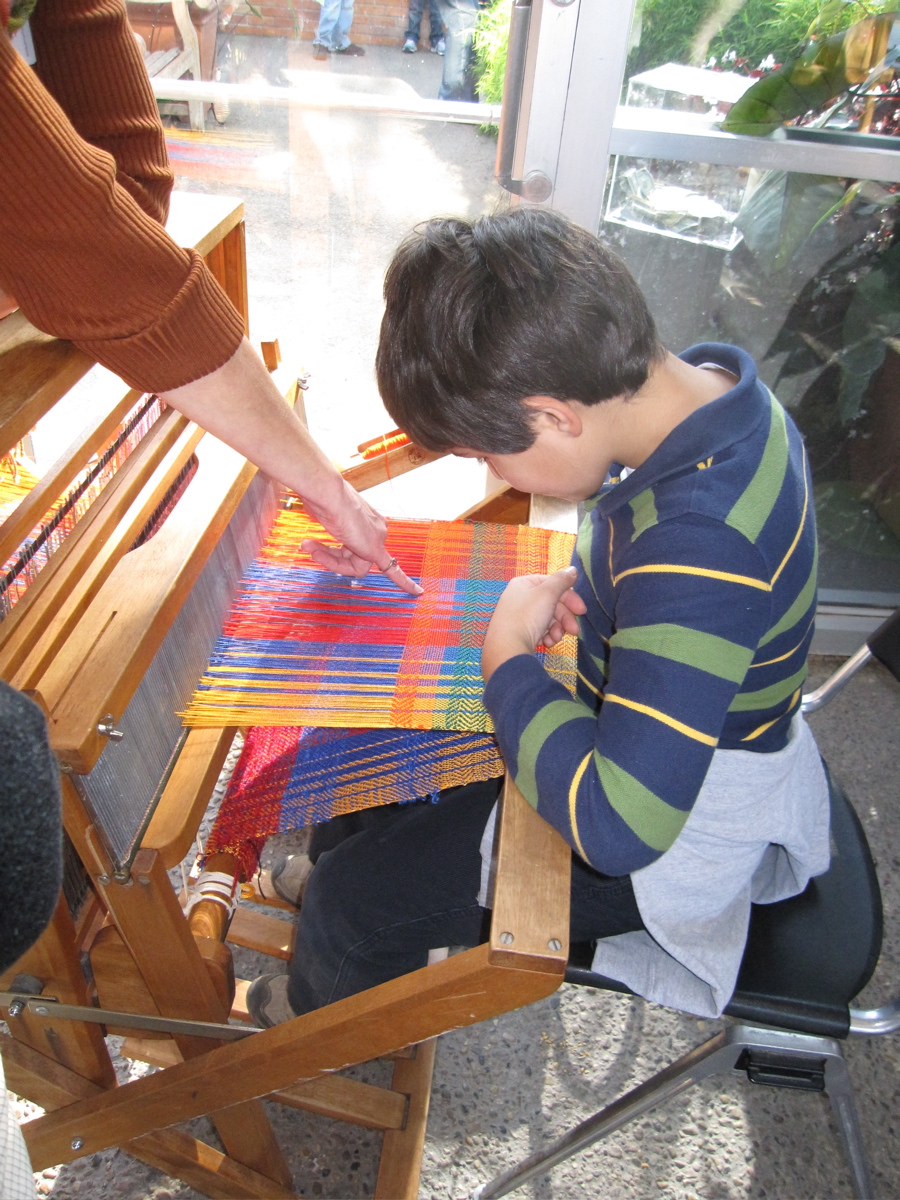 and giving them have a chance to throw the shuttle….
and giving them have a chance to throw the shuttle….
create tactile hands-on experiences that can stay with someone their entire life. Telling the stories of the workers in the mills, how fortunes were made and lost, and where the terms and sayings we use today originated brings dry facts of history to life and connects us to our past. This is where cloth comes from….. this is how it’s made…. and these are people who make it today.
One of the fun things about doing demonstrations is that you never know what may come out of the experience. Because I’m talking with people as I work and need to be able to stop at any given moment to answer a question or give a quick recap, I do not attempt to create anything complex – I just play and try out ideas. This was true at the last AAFG Holiday Sale when I made a hat using silk chiffon fabric covered with layers of merino wool and silk fibers as embellishmentto to demonstrate wet felting. Because this hat can be turned inside out, you get to choose which ‘look’ strikes your fancy = more intense color or muted color.
I was pleased with the experiment and continued playing with the idea in different colors.
Not only can doing demonstrations educate and allow for experimentation, they can be a welcome distraction. For the past 12 years members of the Ann Arbor Fiberarts Guild have been weaving at the University of Michigan Medical Center as a form of entertainment and distraction for patients and family members who are waiting to see the doctor. Currently we are in the lobby of the Cancer Center and the cloth woven is made into hats that are given to patients undergoing chemo and other treatments.
“We are so pleased to have this wonderful skill shared with our patients,
not only for the calming affect it has by sitting and observing the weavers,
but also for the lovely hats made for our patients from the weavings.”
Share….. Educate…… Outreach…… Connect…….
all this and more can be found when doin’ demos!
